Assignment 6 – 2/15/22
Yumeng Zhuang and Michelle Murray worked together for this assignment.
I (Yumeng) was inspired by many parasitic animals that live in the hair or close to the skin, so I was hoping to make something intimate and almost threatening. I opted for the neck because it is warm, delicate, and full of passages of things vital to our existence (air, blood, and food).
I (Michelle) was inspired by animals that squeeze tightly around their hosts, similar to a boa constrictor. Similar to Yumeng, I decided to work close to the neck and the head, since both are critical locations on the human body.
Anti-gill – Yumeng
The anti-gill does the opposite of what a gill does. While a gill allows oxygen to diffuse into the bloodstream, the anti-gill absorbs oxygen from the breaths through the contact skin. It then raises its arms to diffuse the oxygen back to the environment. The host came into contact with the anti-gill by wearing contaminated high-collar clothes. However, it is not seriously detrimental to the host because the iridescent arms can be very expressive when all the host needs to do is to breathe a bit faster.
Construction process:
I heat sealed two pieces of fabric together in the middle (now I think about it I could have just split one seam of the tube and spread that into a larger sheet). Then I sealed the front and back of the pattern together.
After 2 hours of patching holes, the bag does inflate a bit, but not to the pressure that would inflate the lower “fins” and it barely lifts the upper arms.
I taped the snake-skin-like shiny fabric onto the arms to show the “gill” texture. It can also be an expression the host may turn on by breathing faster.
The actual piece is attached like this
So the bag is even harder to inflate. Michelle helped with animating the last part of the video.
Rattle and Squeeze – Michelle
Rattle and Squeeze is a snake-like creature that targets its unknowing hosts at nighttime. Rattle and Squeeze is long in length and approaches its target in silence. Due to its slim body and smooth texture of its scales, the host may be unaware of its presence. Once it reaches its host’s next area, It curls up the front half of its body, blocking off the airways and blood to the human’s organs. This is a slow process, steadily increasing pressure around the host for an elapsed period of time. As it squeezes tighter and tighter, a creaking and crackling noise is produced from the parasite’s body. Its rattlesnake tail will then shake and alert others of its kind of its hard work and well-deserving meal.
In the video below, I had Yumeng demonstrate Rattle and Squeeze in action.
Construction Process:
Before designing my final form of Rattle and Squeeze, I experimented on a smaller scale. I first made a smaller prototype of the curling mechanism using plastic film, the heat sealer, and the pump as shown in the image and video below.
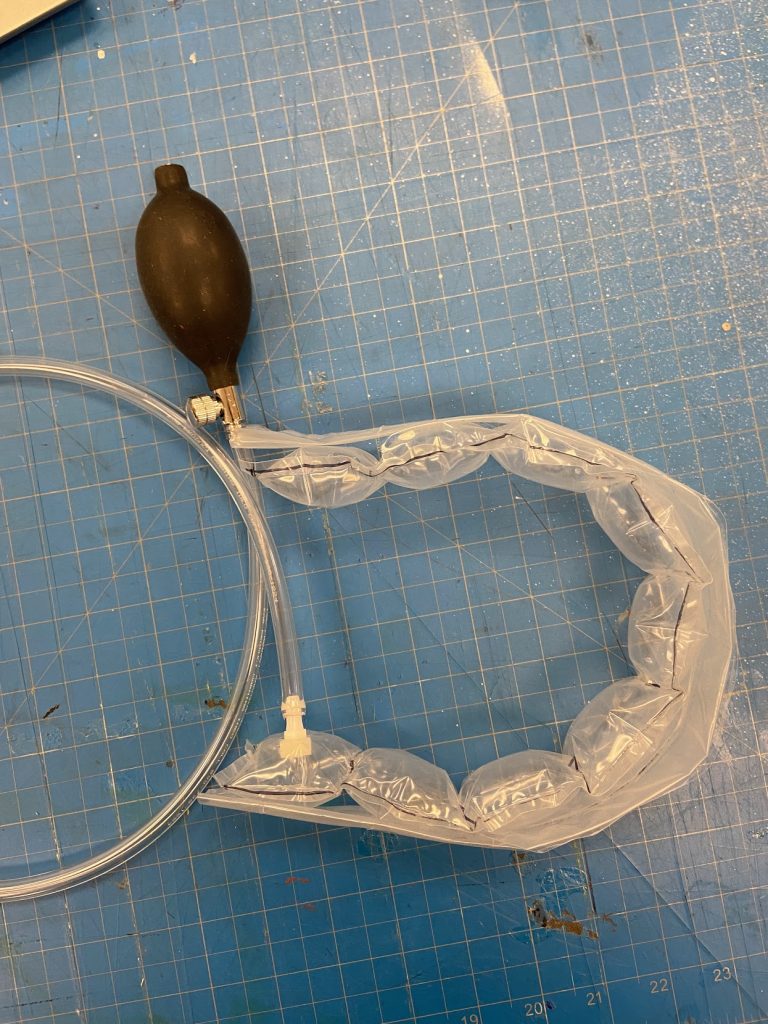
Then using one long piece of plastic film, I created two strips of 4″x4″ squares to be then heat sealed using the press. I then left an opening at corresponding ends so that I can heat seal the two strips together to make an extra-long body. I had issues with holes and spent the majority of my time trying to identify the leak. I even used a few pieces of tape. In hindsight, I probably should’ve just used on a long sheet of plastic, but then I would have twice as much waste. In the end, I was able to identify the leak so Yumeng had to pump Rattle and Squeeze consistently to demonstrate the performance.
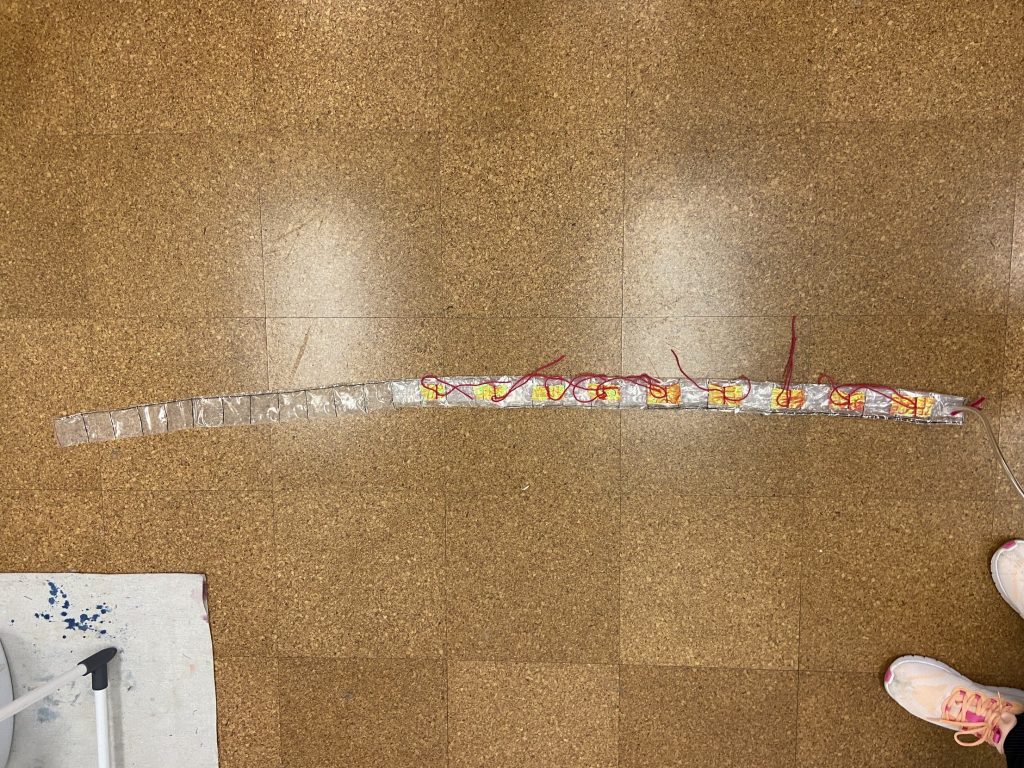
Yumeng and I were both inspired by the same fabric, a neon pink, shiny, metallic, and crinkly fabric found in the Ideate studio. There was a scaly/reptile pattern printed on it, so it reminded me of a snake’s skin. I taped squares of the fabric onto the inner portion of Rattle and Squeeze so that when it curled up, the fabric would move and bump up into shape. The motion was fascinating to watch, and you could even hear the fabric crinkling which I thought was so cool.
I then decided to add some yarn to attach to the pink fabric scales to further demonstrate motion in Rattle and Squeeze. A snake’s tongue and some eyes were also necessary to add to give it more of an animal/parasitic look.
Ideally, Rattle and Squeeze would be able to wrap around its host tighter. I think the 4″x4″ spacing of the squares was attributed to the loose-fitting of the squeeze. Being that I already used up a bunch of material and resources, I decided to not go back and start over. I had lots of fun collaborating and working with Yumeng!
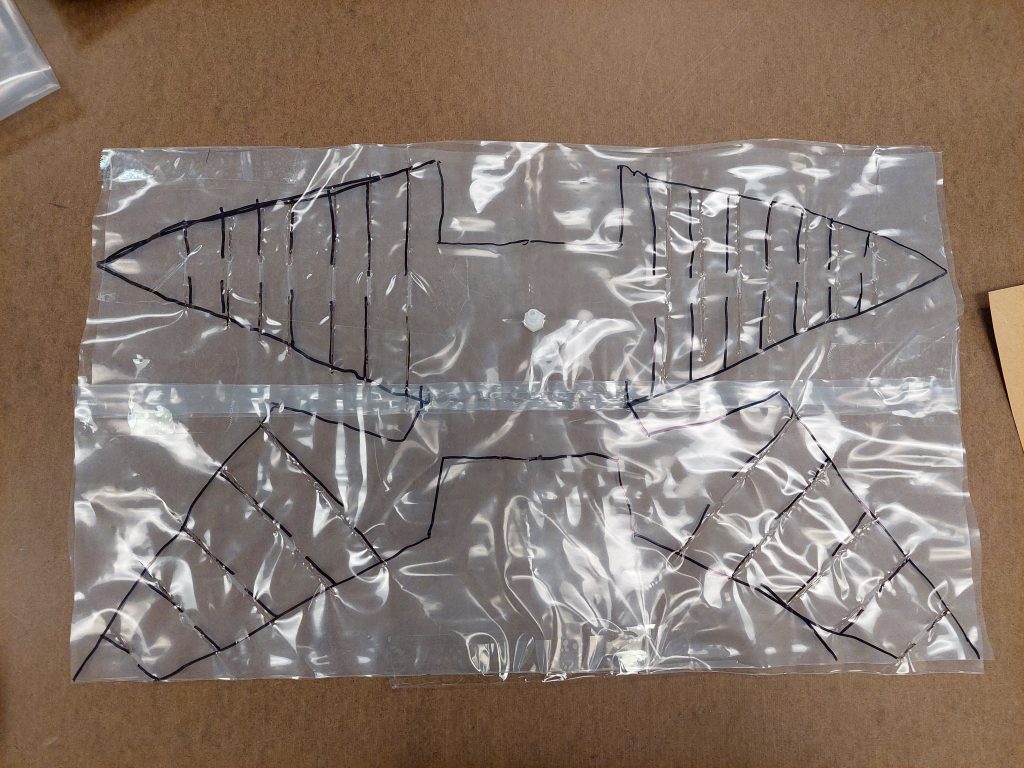
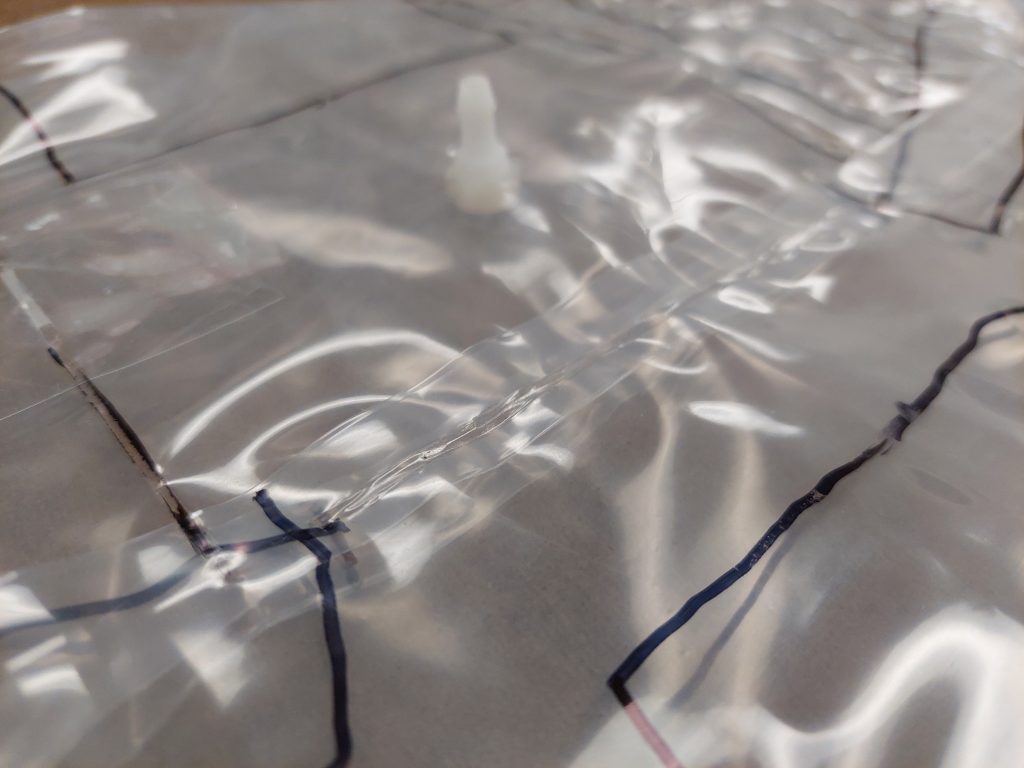
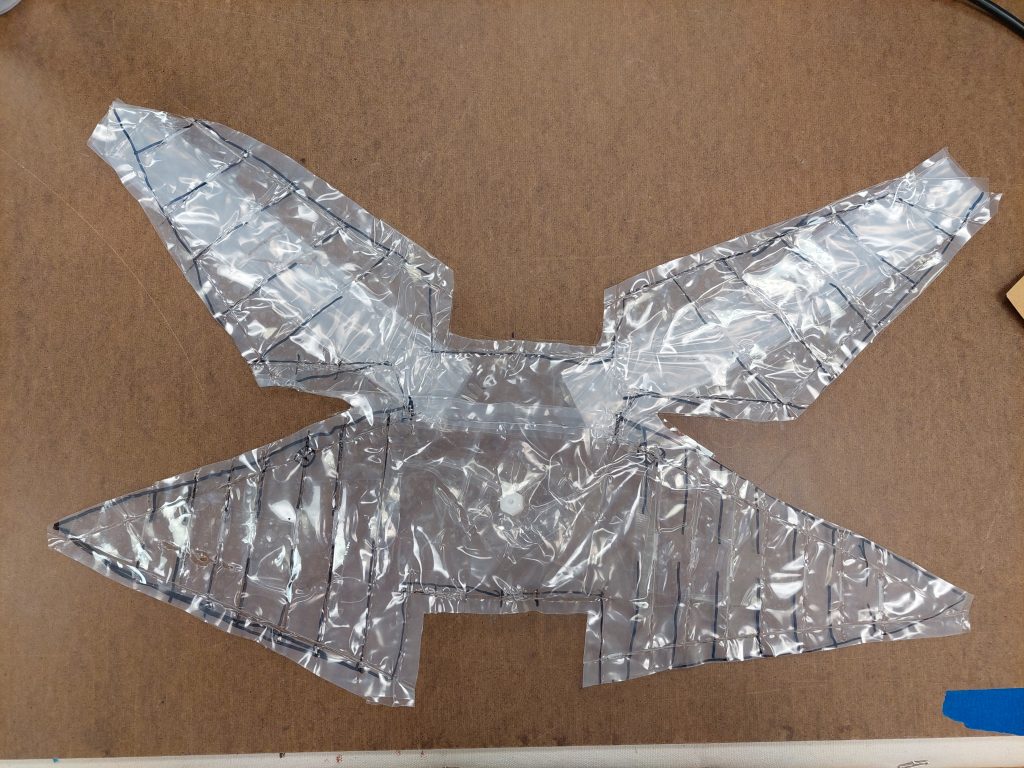
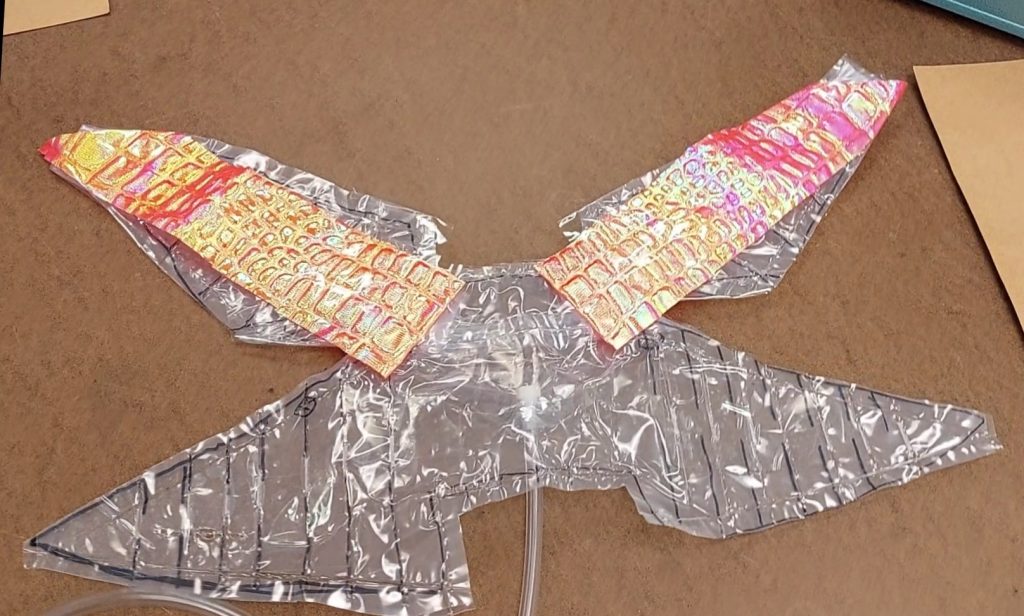
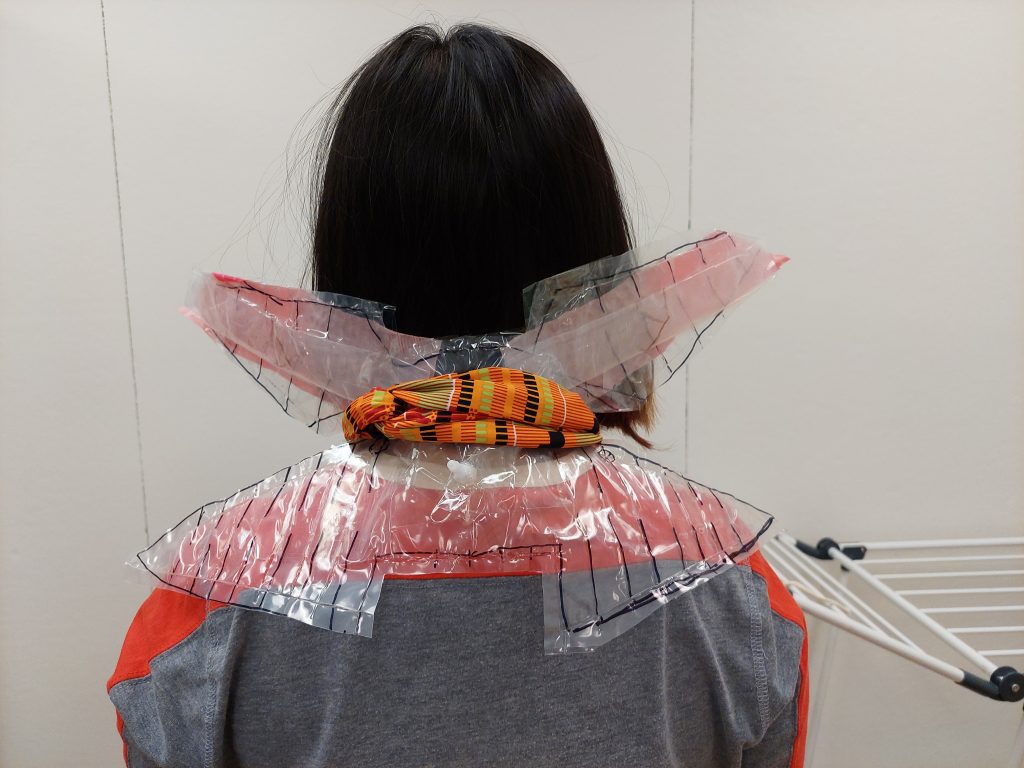
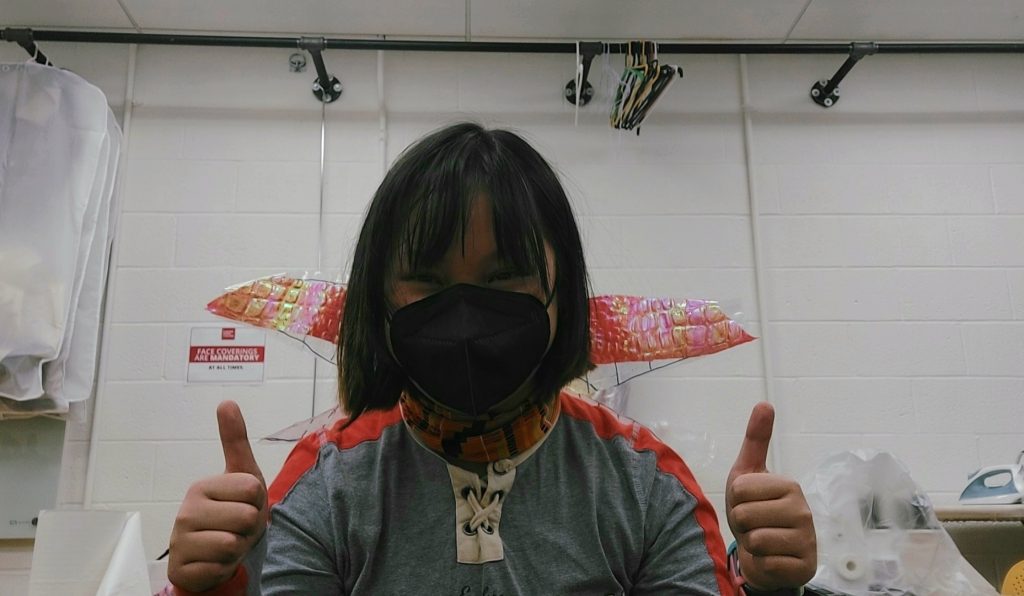

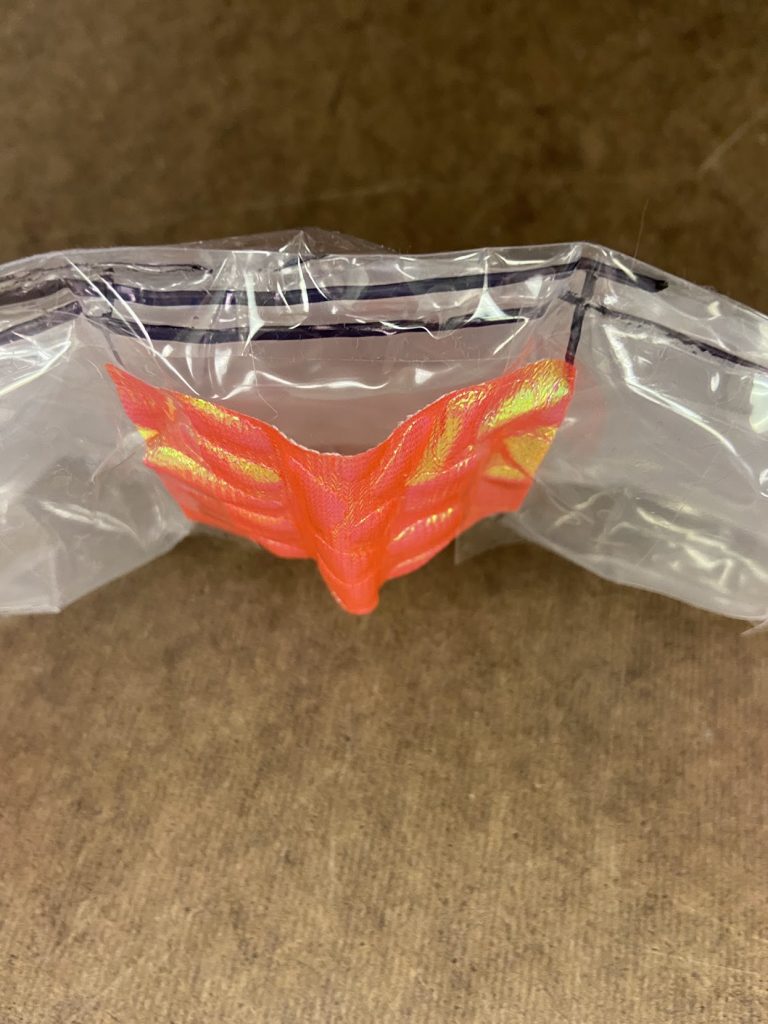



Leave a Reply
You must be logged in to post a comment.